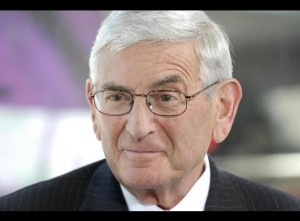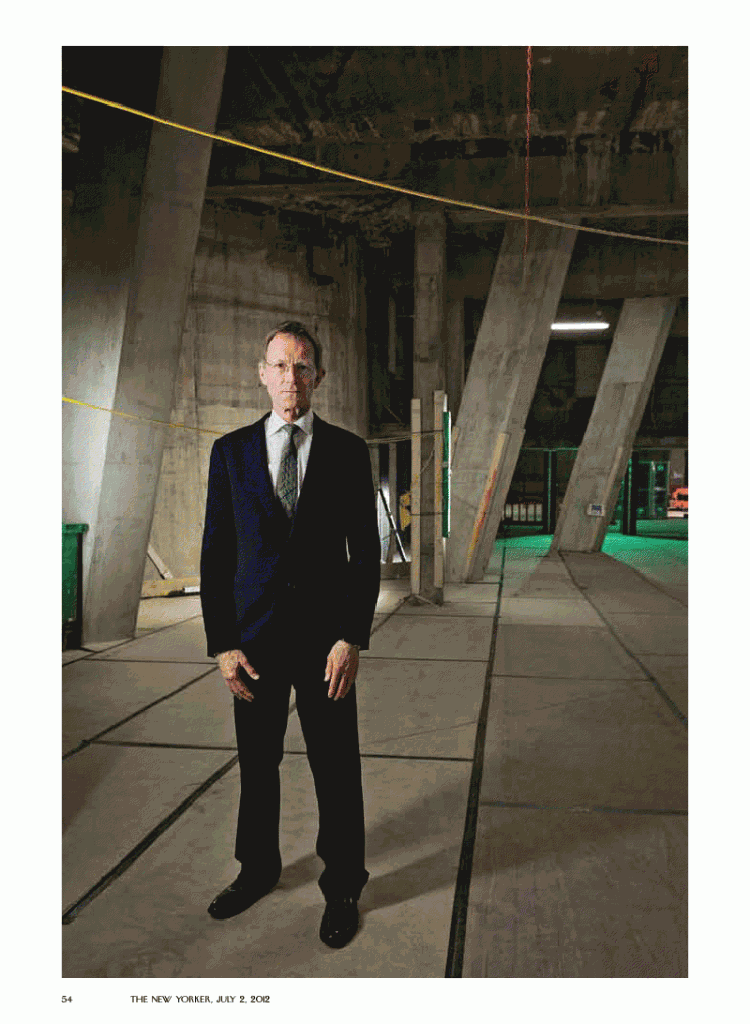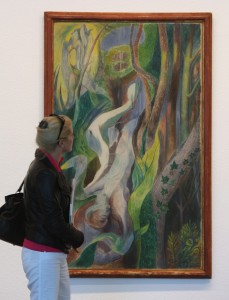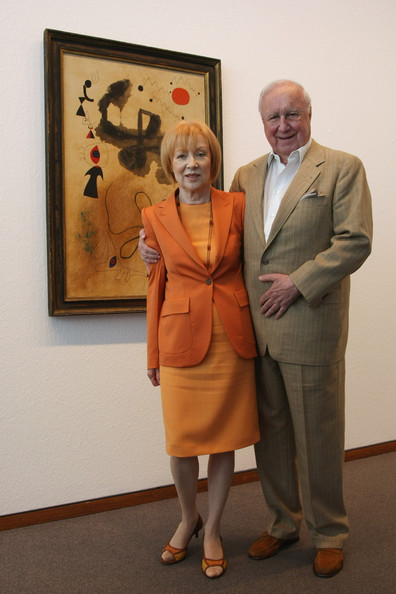Late Friday, the Museum of Contemporary Art issued a press release – not in its press room, but posted on its blog, which is appropriately (in this case) named “The Curve,” about the abrupt and worrying departure of Paul Schimmel, their chief curator, last week.  You can tell how guilty the board and the administration is feeling by how they couched it.
 First, they insisted it was a resignation, not a firing — despite the fact the Schimmel was called to the office of Eli Broad (right), the financier who gave MOCA a lifeline in Decemberm, 2008, to learn of his fate. Wouldn’t you have liked to be a fly on the wall to hear that conversation?
First, they insisted it was a resignation, not a firing — despite the fact the Schimmel was called to the office of Eli Broad (right), the financier who gave MOCA a lifeline in Decemberm, 2008, to learn of his fate. Wouldn’t you have liked to be a fly on the wall to hear that conversation?
Second, they said the press release was drafted with Schimmel.
Third, they said he would work for MOCA as an independent curator in the future, finishing at least one of this current exhibition projects, Destroy the Picture: Painting the Void, 1949-1962, which opens in September.
Fourth, they named a gallery in the Geffen Contemporary after him.
The release did not disclose his departing pay package, however, which I would guess could be substantial (for a museum) and probably includes hush money aka a nondisparagement clause. So we may never really know what happened.
Nor did the release say what will happen to the Richard Hamilton retrospective that Schimmel has been co-curating with partners at the Tate Modern in London and Reina Sofia in Madrid.
If you have the stomach or want a good laugh, you can read the release here. Or you can read Jori Finkel in the LATimes here.
There is no conceivable way to construe the week’s events as anything less than dysfunction at MOCA. There is an obvious dichotomy of vision between director Jeffrey Deitch and Schimmel, and a board that seems to have taken over when those two couldn’t work it out. Given the choice between the commercial gallerist they hired and the guy who has been there, mostly as chief curator and the producer of some of its most well-received shows,  in the last 25 years, they went — naturally — with their hire.
Trustees are not fooling anyone. As of this writing, for example, the Curve post has elicited 24 comments from MOCA followers: 23 back Schimmel (several say fire Deitch), and one says let’s move on. None agree with the “resignation.”
Worse, this all proves Deitch is either a puppet or a coward, and possibly both. If he’s the boss, he should have dealt with his own chief curator — whether or not they were still speaking.
If the board thought they were insulating Deitch from this decision, they made a mistake. It will take MOCA a long time to recover from this.





